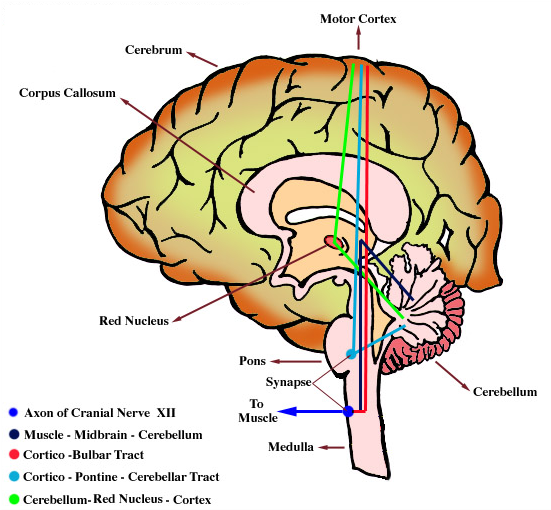Cerebellar function
The cerebellum that is little brain is a structure which is situated at the back of the brain, underlying the temporal and occipital lobes of the cerebral cortex. Although the cerebellum accounts for approximately 10% of the brain’s volume, it contains over 50% of the total number of neurons in the brain. In the past, the cerebellum has been considered a motor structure, since cerebellar damage leads to impairments in motor control and posture and since the majority of the cerebellum’s outcomes are a part of the motor system. Motor commands are not started in the cerebellum; instead, the cerebellum alters the motor commands of the descending pathways to make movements more precise and adaptive.

The cerebellar participation in the VOR might be described in terms of the learning necessities of a feed-forward controller. Whenever the head moves, a compensatory eye movement should be made to maintain a steady gaze. The cerebellum obtains sensory input from the vestibular system notifying it that the head is moving. It also obtains input from eye muscle proprioceptors and other related sources of information about present circumstances in order to make a precise compensatory eye movement. It computes all of this advance sensory information and computes the proper eye movement to precisely counterbalance the head movement. What when the eye movement does not match the head movement, though, and the visual image moves across the retina.The retinal slip constitutes an error signal to tell the cerebellum that next time such situations are met, adjust the eye movement to reduce the retinal slip. This trial and error series will be repeated until the movement is correctly calibrated; furthermore, these methods will assure that the movements stay calibrated.